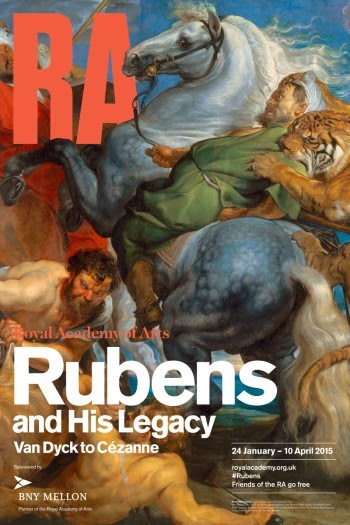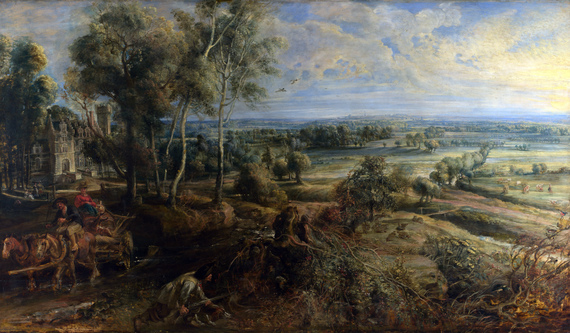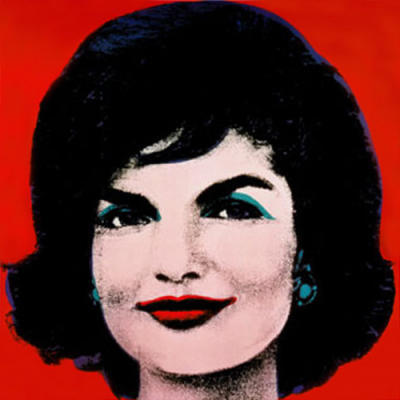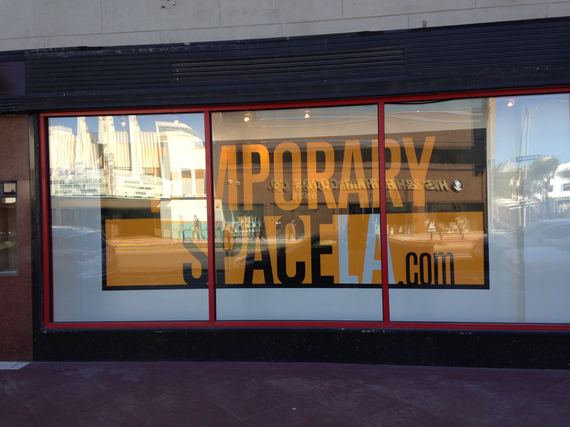Benjamin Scheuer sat at Buvette in the West Village, a casual grin stretching up toward his perfectly coifed 'do. "I dressed for spring today," he said with a velvet voice, sliding over words like they were made of silk. He
did look like spring, with all its restless energy and magnetism. His silver suit and cotton candy tie, along with an ocean blue fedora that he left by the restaurant's door, gave off the allure of an Impressionist painting -- perhaps a mix of Monet's muted water lilies and Toulouse-Lautrec's bawdy back rooms.
The air around him smelled of vintage cologne, but also sweet like Belgian waffles. When he talked, it was with familiarity and warmth. He never stumbled over syllables, but he would pause sometimes, a songwriter lilt dictating the rhythm of his speech. He had discreet mannerisms -- playing with a fork while thinking, or leaning forward just enough to seem friendly without being imposing. You might applaud his undeniable charisma and try to mask your pomegranate cheeks because he's the kind of debonair that reminds you of F. Scott Fitzgerald, a lit match, and whisky on the rocks.
But it seems that, beneath his charming façade, Scheuer has depth as well. This comes out in his opinions and some of the subtleties in his gesture (a hint of a smirk at someone's naïveté or a handshake that feels a little too rehearsed). Nowhere is it quite so obvious as in his music.
"Write down the one thing you certainly do not want anybody to know about you, and burn the paper afterwards -- whatever," he explained. "And then start there. Start your song there. That's your first line. And the first time you do it, it's horrifying, and it's the worst thing ever. But if you do it every single day for three months, it just becomes your job."
His passion made you wonder how difficult it was to get through those first three months of writing while tucked away in a Connecticut cabin with snow outside and a pen in hand.
Scheuer is the mind behind
The Lion,
an autobiographical musical directed by Sean Daniels and performed by Scheuer at the Lynn Redgrave Theater. The venue itself fosters the intimacy that you find in downtown New York: a small stage surrounded by spectators. There's none of the imposition of colossal music halls, and perhaps that makes the work's truthfulness even more urgent, especially when Scheuer's purpose is "creating something out of that which is honest to me."
In
The Lion, Scheuer's songs guide the audience through a bildungsroman that is as unique as it is poignant. The ambiance feels folksy thanks to the seven guitars onstage. However, Scheuer's favorite lyricist is Eminem, and his eclectic artistic influences, as well as his knowledge of the Greek dramatic structure, peek through in his music. And so
The Lion is a narrative wrapped in a concert inside a musical.
The story begins when Ben is a child and his father makes him a cookie tin banjo out of houseware. Suddenly, when he's only 13 years old, his dad dies from an aneurism. Scheuer moves to England with his family only to rebel and return to New York a few years later. One day, while waiting for the subway, he meets a girl, Julia, and falls in love. Of course, she leaves him. Then, he's diagnosed with lymphoma and has to overcome disease. A macabre tale, indeed, and yet he makes it seem so light and uplifting.
Though Scheuer's coming of age plot may be out of the ordinary, it resonates because of the universality of loss, grief, and guilt.
"I get a lot of letters from people who tell me their stories," he said. "I think they feel like we know one another because they've spent an hour and a bit in my living room listening to me talk to them directly. And that's the intention of the show."
Even so, Scheuer is much more complicated than his musical persona. "People fall in love with characters, and just because I'm playing the character of myself, it doesn't mean it's me that they're meeting," he said.
In fact,
The Lion excludes a good chunk of Scheuer's narrative because of time restraints and flow. Scheuer doesn't talk about acting alongside
Eddie Redmayne in his high school production of
Jesus Christ Superstar. There's never a mention of his Harvard education, his years hidden in Boston studying English. Some songs from his band, Escapist Papers, have been cut because they aren't necessary to the story. Scheuer understands what it means to kill your darlings, and he does so relentlessly in order for his autobiography to work.
"Get rid of all the extraneous clutter. [Maintain] harmony and dissonance. Make it about one thing," he said about songwriting.
JULIA, JULIA. Benjamin Scheuer/Escapist Papers. Live at Lincoln Center, 1.30.2012 from Escapist Papers on Vimeo.
This wisdom came from his colleague, Riya Lerner, a photographer who shot Scheuer throughout his cancer scare and who collaborated with him on his book,
Between Two Spaces. Inside its pages, simple, uncluttered images of Scheuer emphasize incisions and scars.
Two photos jump out from the rest. In one, he stands nude like David at the Accademia. It was taken just after his diagnosis, when he had shed 25 pounds because he was sick. Everyone told him he looked great, and he did. But his drastic weight loss was a sign of wavering health, and it was almost ironic that he was so attractive during his most mortal moment.
In the second photo, taken well into treatment, Scheuer slumps on the ground. He's getting well, but he's never looked worse. The juxtaposition of the two pictures -- the notion of how poorly the outside can reflect what lies inside -- was one of the themes Scheuer was particularly intent on highlighting in
Between Two Spaces.
For most, it might be daunting to have an unfamiliar face following you around in your apartment while you strut unclothed, slowly growing accustomed to your new body ravaged by cancer. But for Scheuer, it wasn't an issue.
"Naked is not vulnerable to me," he explained. "Vulnerable is lying at the whim of medical cocktails and having bone marrow sucked out of my back. That's vulnerable."
The photo project was another example of Scheuer creating something from disaster. "A lot of times it felt stupid or boring or wasteful, but I stuck to it because I believe in my heart that making stuff out of the bad things that happen to you is good," he said.
INVISIBLE CITIES. Benjamin Scheuer/Escapist Papers. Lincoln Center. 1-30-12 from Escapist Papers on Vimeo.
Obviously, transforming tragedy into art is Scheuer's specialty. He's an expert at taking the taboo and weaving it into a commodity -- something that can be digested by the masses. When asked how he feels comfortable writing about challenging experiences, particularly ones that involve characters other than himself, he laughed with a blasé yet serious tone.
"Oh comfortable?" he asked. "I don't feel comfortable doing it, and that's why I do it. I think that the best writing comes when I'm not comfortable. It's comfortable to talk about the weather or your day. It's not comfortable to talk about why your relationship failed or what it was like watching your father have an aneurism."
"The truth is uncomfortable," he continued. "We don't like what really happened. We try to polish our narrative."
And
The Lion is absolutely polished; it must be to translate to the dramatic sphere. Still, underlying the polish is grime, and that's what makes the production so endearing. Because it's a diamond in the rough in the best way, Scheuer's musical has garnered attention around the world. The focus always comes back to his dapper
je ne sais quoi, and while digging into his eggs at breakfast, he mocked the descriptions that so often define him to the public.
"They said I have a winning personality, which I point out simply means they don't want to have sex with me," he said of
an article in the
New York Times. "That's what a 'good personality' means. Think back to high school. 'What's he like?' 'He has a great personality.'"
But Scheuer
does have a great personality. There's a reason why big names are attracted to
The Lion; Ben presents as someone with whom you'd like to grab a beer. Or maybe sushi, as he did with Bruce Willis a few weeks ago after the Hollywood star came to his show. During spirited conversation about the theater, Willis and Scheuer concluded that they should trade roles for a while.
"Ultimately we decided that he's going to be in
The Lion and he's going to play Ben, and I'm going to go be an international action hero," Scheuer joked.
Assuming that he'll forgo his international action hero career, you might wonder what's next for Scheuer after
The Lion. Well, he's dealt with pain for years, so now it's time to pursue pleasure. He's currently working on a musical,
Kink, about sex and sexuality in BDSM. The subject seems fitting. After all, Scheuer is the type of Casanova that a sexually frustrated, middle-aged woman might use as inspiration for her fan fiction.
But for now, Scheuer's still playing his heart out night after night at the Lynn Redgrave Theater. When
The Lion leaves Manhattan on March 29, he'll tour the country, sharing his tunes with regional audiences. They'll wander into auditoriums, searching for a message in his one-man musical. The best part? They'll have to come up with it on their own.
"I would never tell anybody how to listen to my show," Scheuer said. "I'd be glad if they listened carefully."





































